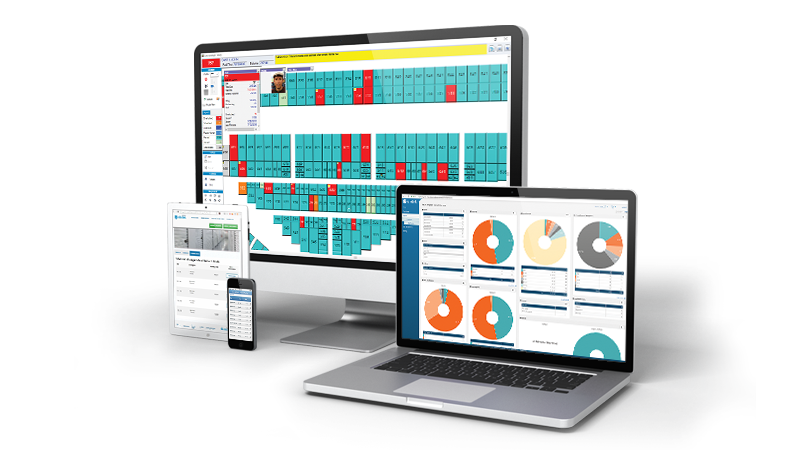Metaverse Mavericks: Top 5 Blockchain and Crypto Projects Leading the Way
Introduction
The pace of environmental change has quickened as a direct result of the development of new technologies. The Metaverse can offer some interesting new dimensions to the blockchain ventures that are being presented. While many believe the Metaverse will take longer than 10 years to become a reality, this may be different. Nevertheless, keeping track of the expanding interest in metaverse projects, particularly those involving blockchain technology and cryptocurrencies, is of the utmost importance.
In Metaverse, what role does the technology of blockchain play?
Will activities based on blockchain technology in the Metaverse contribute to the development of the idea of a fully virtual ecosystem?
An exhaustive investigation of the most important blockchain projects currently under development for the Metaverse has the potential to produce workable answers to all of these issues.
The following list provides an overview of some of the most important Metaverse consulting services for blockchain-based projects currently active within the Metaverse.
The Unanticipated Acceleration of the Growth of the Metaverse
The definition of the Metaverse should be consulted before engaging in any conversation regarding blockchain technology or cryptocurrency schemes. There is a lot of competition for seats in the Metaverse, and some of the leaders in this competition are Microsoft, Facebook, and NVidia. In its most basic form, the Metaverse would consist of a network of interconnected virtual worlds that act together as a digital ecosystem. Access to many services and applications is possible from various locations inside the Metaverse, catering to multiple use cases and purposes.
It’s amusing to see how many people have the misconception that the Metaverse will never expand. On the flip side, the pace of change in the Metaverse can be described as dizzying. The more people collaborate and start new projects, the more different aspects of their digital lives become interconnected. Despite this, it is heartening to see that blockchain technology will play such an important part in the development of the Metaverse.
One of the intriguing responses to the question “What is a Metaverse project?” is the Binance Smart Chain, which uses blockchain technology. In the past, Binance Smart Chain has served as a hosting platform for a diverse range of metaverse consulting services applications, including role-playing games and a metaverse universe. Another project that showcases the Metaverse’s potential for blockchain-based or cryptocurrency-based enterprises is called TopGoal, which is a collectible card game.
What Kind of Role Does Blockchain Play in the Metaverse?
The vast majority of the metaverse projects currently being worked on are, at their core, video games that incorporate elements of the Metaverse. Nevertheless, the creation of the Metaverse calls for the insertion of a great deal of supplementary material. Blockchain technology or cryptocurrencies have the potential to finish off the Metaverse by providing many essential qualities.
Expanding a list of cryptocurrency projects within the metaverse consulting services would indicate the Metaverse’s increased productivity due to blockchain or cryptocurrency.
The following are a few of the most important components of blockchain technology or cryptocurrencies that match the planned layout of the Metaverse.
- Manifestations of One’s Ownership
The blockchain can generate a digital trail that can be used to prove ownership of metaverse items. If you have a bitcoin wallet, you can use your private keys to demonstrate ownership of commodities or actions on a blockchain, provided that you have access to those keys. As a result, metaverse crypto projects could provide highly efficient and safe means for creating proof of ownership and digital identity.
- Value Exchange
The ability to exchange value is yet another feature necessary for the Metaverse to function properly. A method of effectively expressing value to users within the Metaverse while also maintaining their faith is required. For example, cryptocurrencies offer more protection on a blockchain than the in-game cash used in multiplayer video games. Therefore, anyone who wishes to spend a significant amount of time engaged in the Metaverse may depend on crypto to provide them with a reliable source of revenue.
- Interoperability
The level of interoperability that blockchain technology in the metaverse consulting services makes possible is a significant factor in determining whether or not the most popular bitcoin businesses will succeed. Blockchain technology may make it possible for different metaverse realms to interact with one another. Users can construct blockchains that can communicate with one another using technologies such as Avalanche and Polkadot.
- The Role of Governance
The governance of a virtual environment that mimics the real world would necessitate the establishment of laws, and the Metaverse is no exception to this rule. Users’ ability to adjust the Metaverse’s participation requirements should be the primary focus of their efforts. In the Metaverse, the blockchain provides the best framework for a government that is both just and open to the public.
- Collectibles are One-of-a-Kind
The ability to digitally collect items would be the single most significant factor in the success of blockchain applications and cryptocurrencies. You must present evidence of the uniqueness and individuality of the assets offered by the Metaverse concerning the specified real-world activities. While blockchain technology can provide the most accurate depiction of actual commodity ownership, non-fungible tokens (NFTs) have the potential to be utilized in the production of assets that are one hundred percent original.
Top Blockchain and Crypto Projects in the Metaverse

In the Metaverse, the value propositions provided by blockchain technology are sufficient to sustain the continued expansion of blockchain and cryptocurrency enterprises. A transparent, low-cost, and secure means for aligning oneself with the core aim of the Metaverse is provided by blockchain technology. In light of this, let’s look at some of the most exciting blockchain and cryptocurrency projects now being developed with metaverse consulting services.
1. Decentraland
The majority of Decentraland exists in the third dimension and is considered one of the early pioneers of the Metaverse. In the 3D environment, players can engage in various activities, including constructing virtual real estate plots. In addition, users of Decentraland can develop content, engage with other users, and organize events.
Decentraland was already a well-known metaverse project several years before the excitement surrounding it began to build. The straightforward two-dimensional game introduced in 2016 has evolved into one of the most prominent examples of both a metaverse game and a metaverse cryptocurrency effort, with NFTs having a combined worth of hundreds of millions of dollars. In addition, Decentraland offers the MANA token, a native ERC-20 utility token.
2. Bloktopia
The inclusion of Bloktopia on the list of crucial blockchain and cryptocurrency ventures in the Metaverse is the second big addition to make in recent times. To compete in this metaverse virtual reality game, you must find a location with a tower. The building has twenty-one stories, which is proportional to the total number of bitcoins in circulation, which is twenty-one million at the moment. Its primary function is to serve as a central location in the metaverse consulting services for various activities, including socializing, working, and attending events. The Polygon blockchain is utilized by Bloktopia to power its four primary functionalities: learning, earning, playing, and constructing.
3. Sandbox
The Sandbox is quickly becoming one of the most well-known crypto projects in the Metaverse. Users can explore a digital world within the context of a game built on blockchain technology. The NFTs, user-created environments and other items comprise the various components of the Sandbox’s virtual universe. The Sandbox has evolved into a complex platform that operates on Ether as well as its own money, denoted by the symbol SAND.
4. Enjin
Enjin is an essential addition to the list of businesses that deal in metaverse cryptocurrencies because of its distinctive qualities. It is a platform built on blockchain technology that allows users to create NFTs that can be used as virtual commodities in video games. Enjin is pleased to announce the successful introduction of software development kits, often known as SDKs, which will make it easier for users to construct NFTs based on Ethereum. Enjin has committed to developing a reliable infrastructure for minting non-fungible tokens, which have rapidly become an essential component of the Metaverse.
5. Star Atlas
The third endeavor, Star Atlas, is one of the most creative attempts to create a crypto-metaverse, and it is the very last one. This one-of-a-kind gaming metaverse is being built using blockchain technology, decentralized financial systems, real-time graphics, and online multiplayer games. Integrating the Solana blockchain into Star Atlas’ infrastructure is a prime example of how blockchain technology and the Metaverse may coexist.
To Summarise
The Metaverse is currently the most talked about development in technological trends. Important evidence of the viability of the Metaverse includes Facebook’s recent rebranding and the rapid rise in the value of metaverse tokens. In addition, blockchain initiatives for the Metaverse justify combining blockchain technology and the Metaverse.
On the other hand, the Metaverse is only in its infant phases of growth at this point. Concurrently, the number of efforts using the Metaverse is rapidly growing. The metaverse consulting services may acquire new properties through blockchain technology, such as decentralization, ownership, and interoperability. How will the interaction between blockchains and the Metaverse develop in the future? To find the answers you’re looking for, you should immediately begin gaining as much knowledge about the Metaverse as possible.









